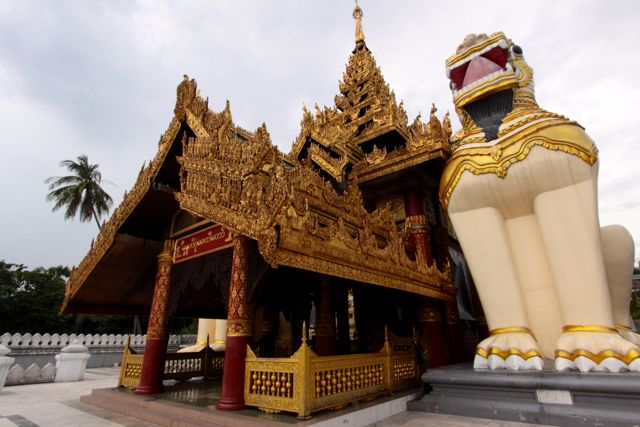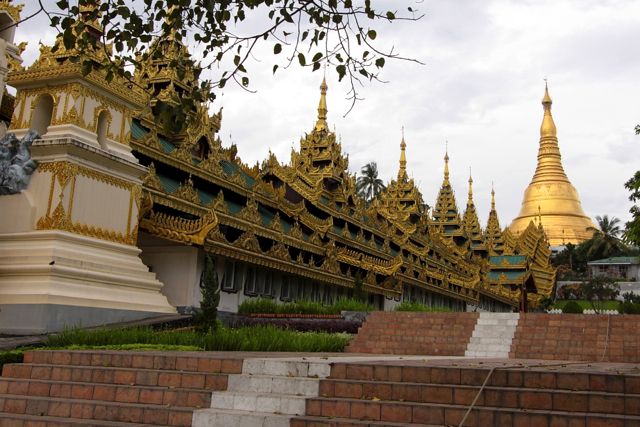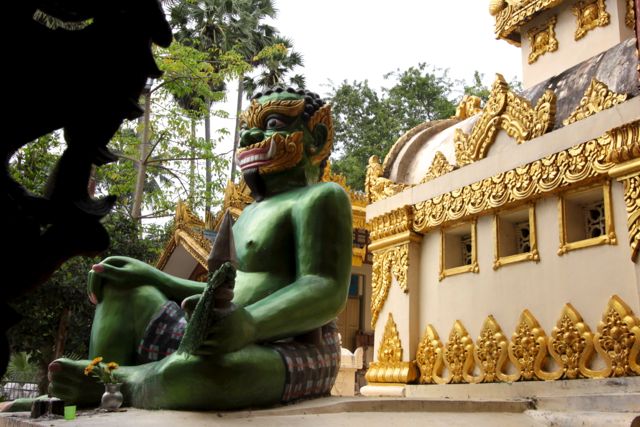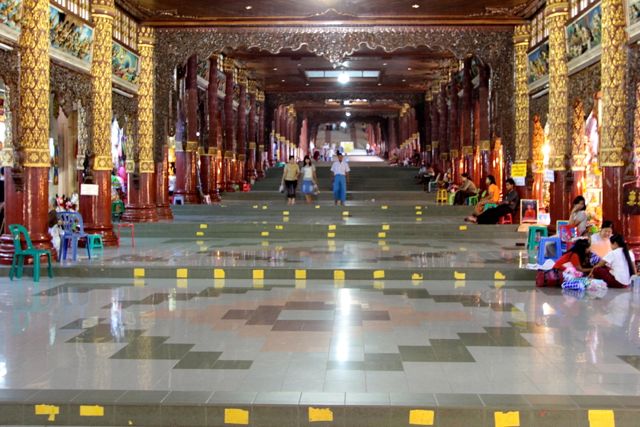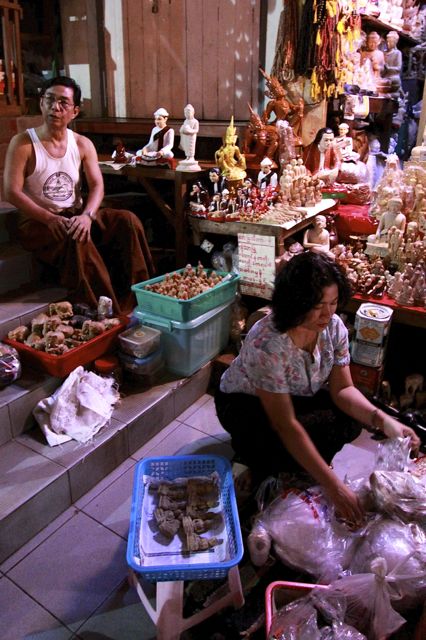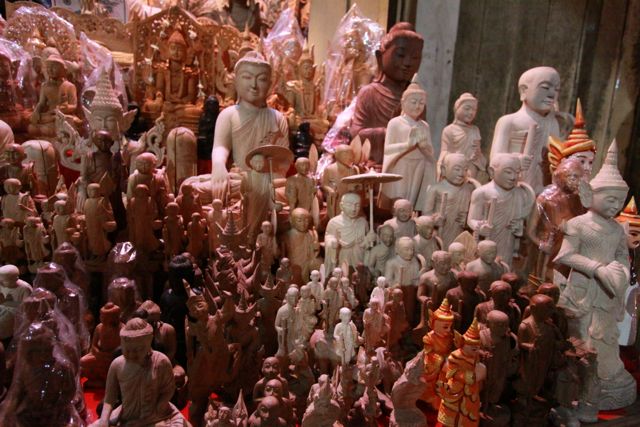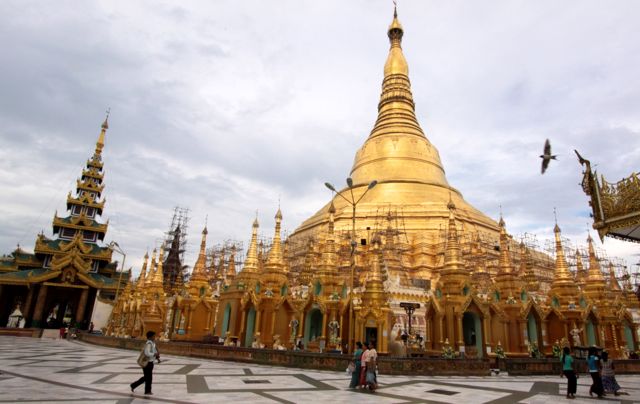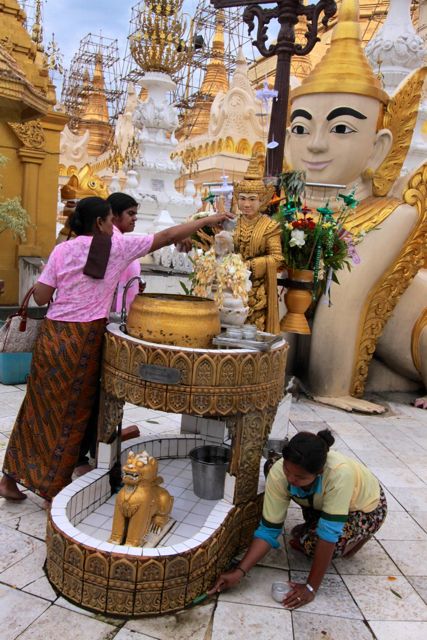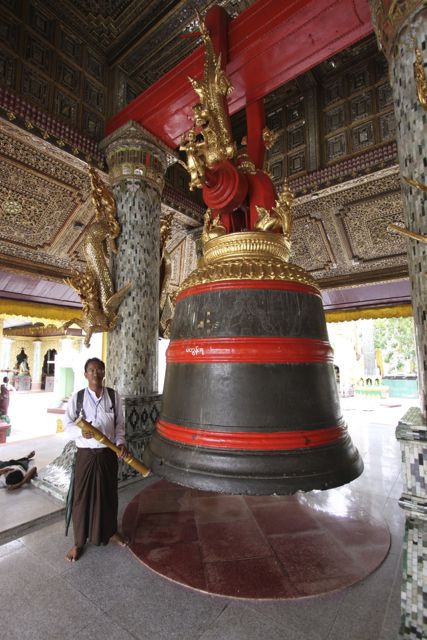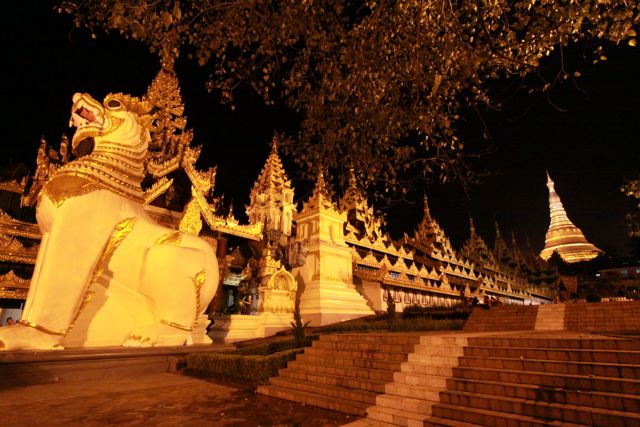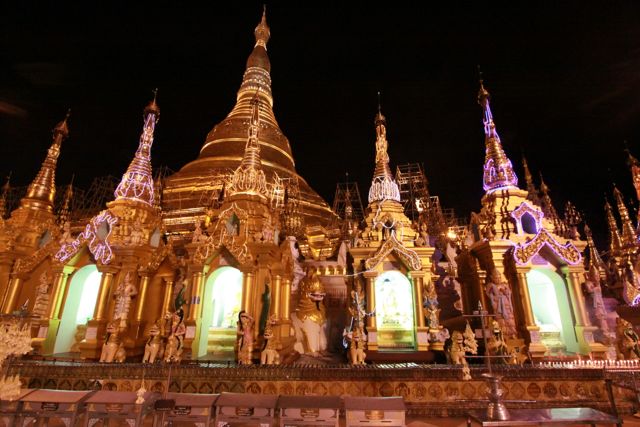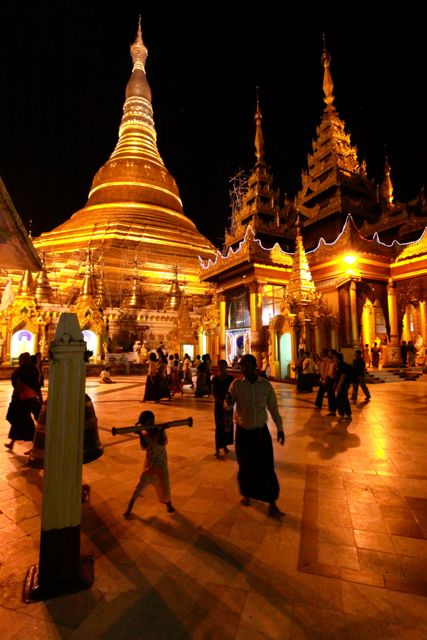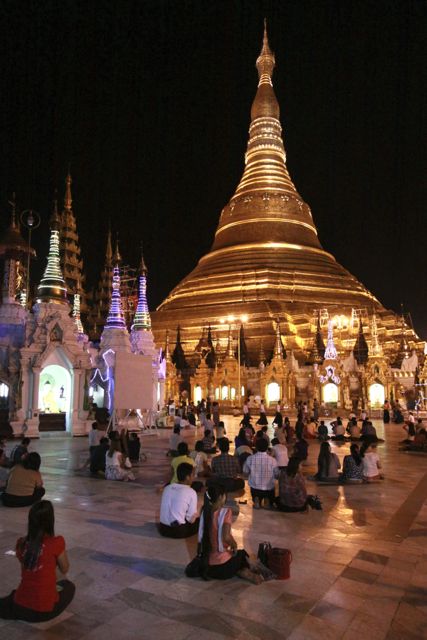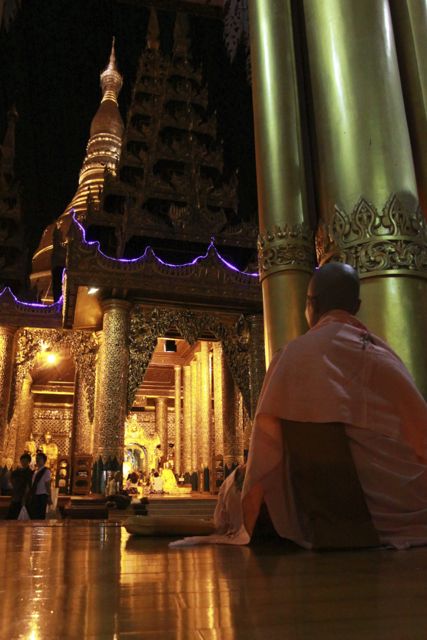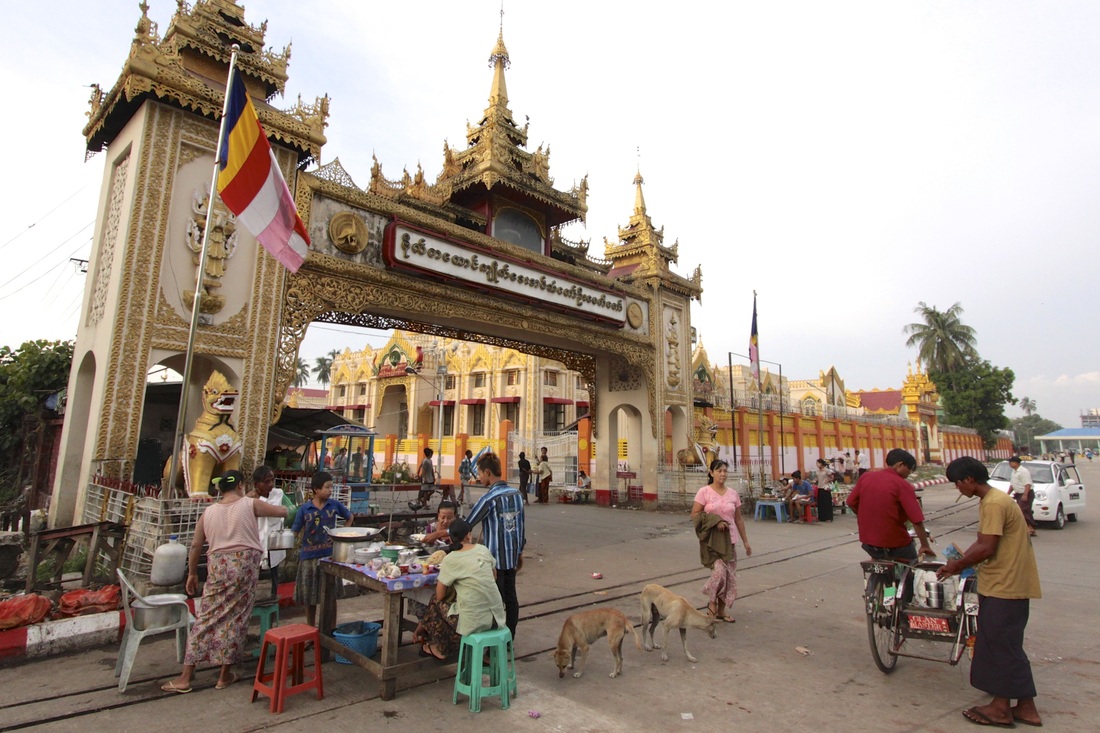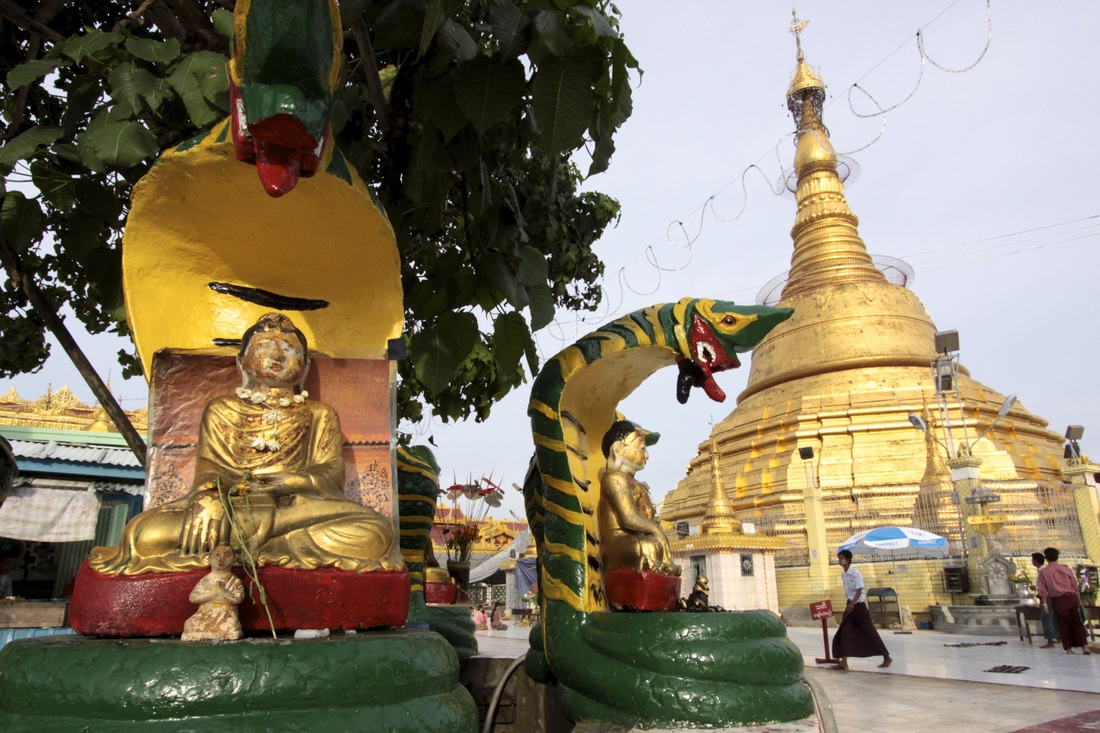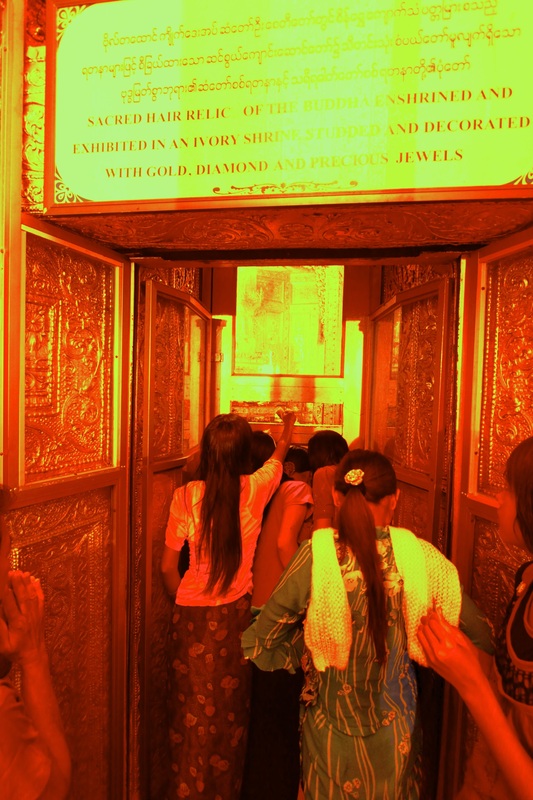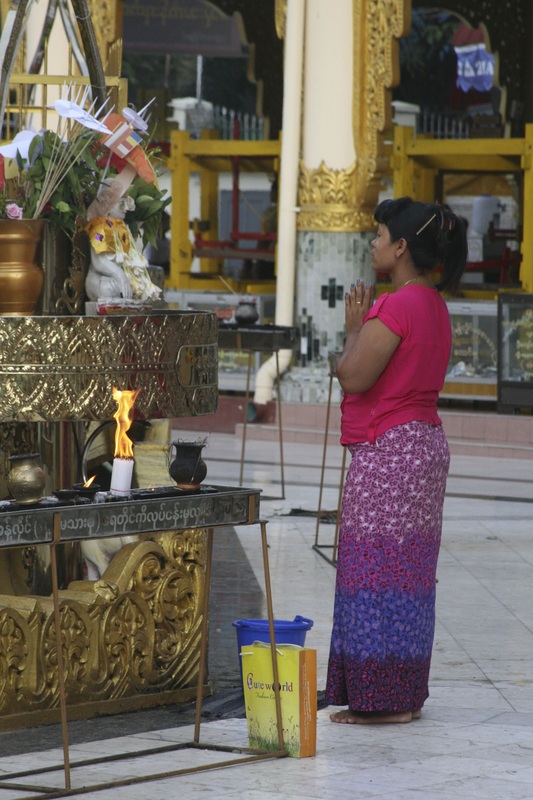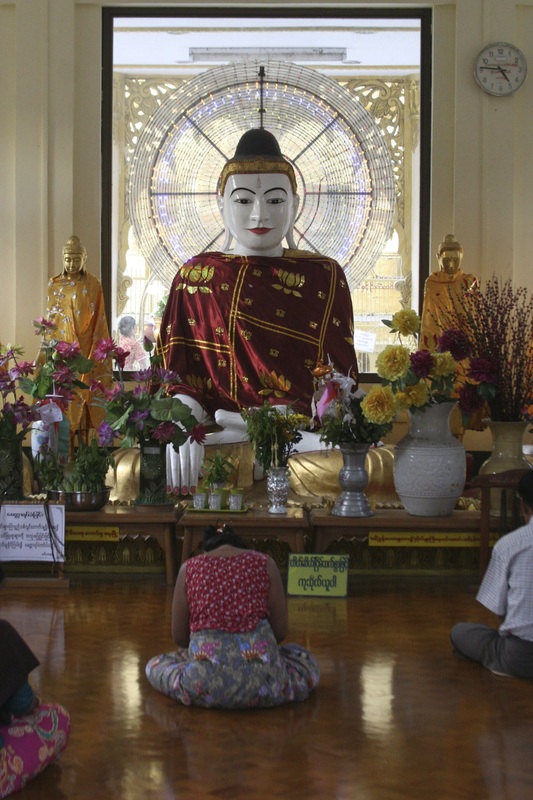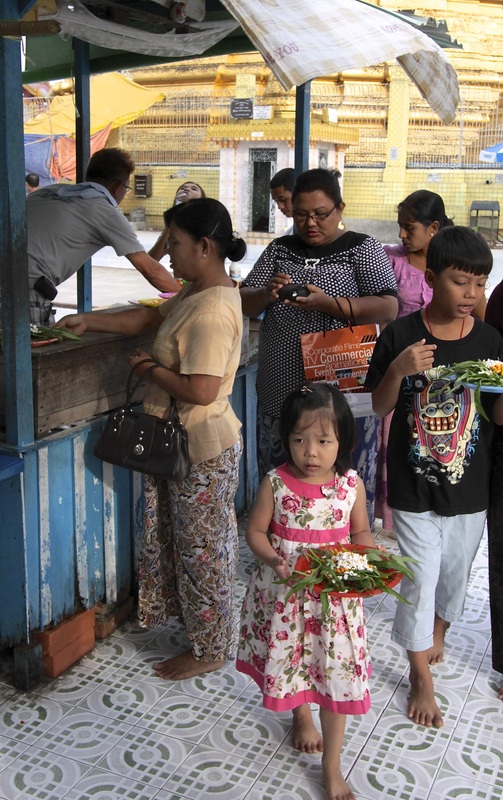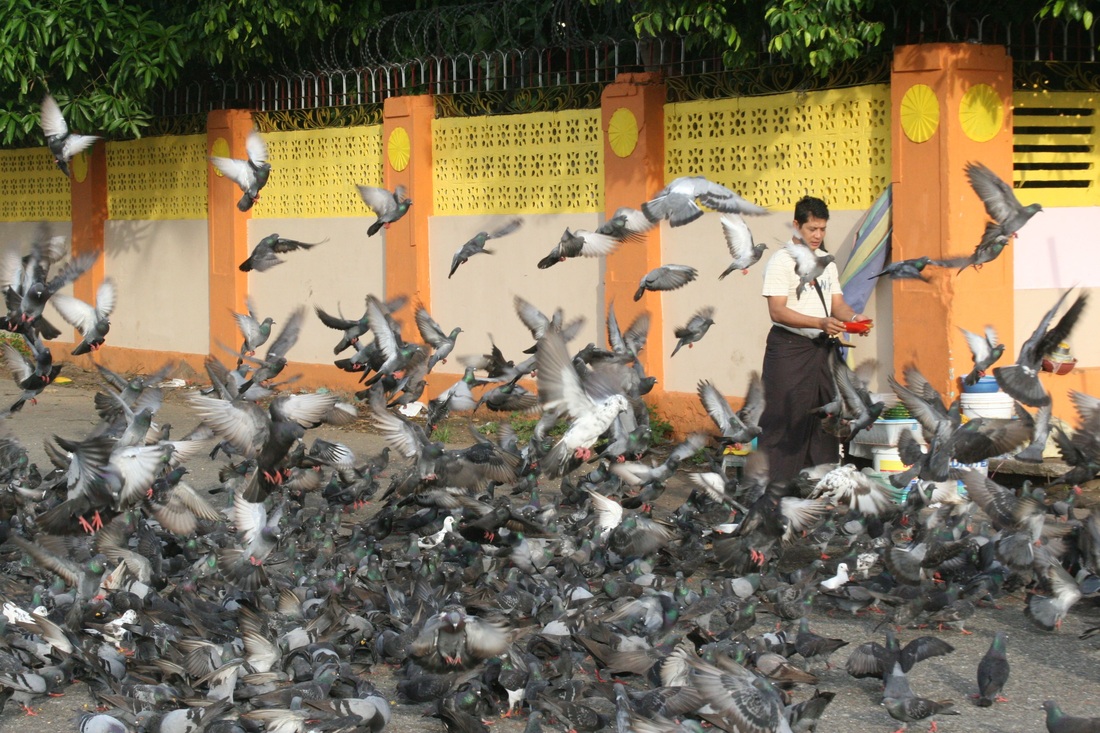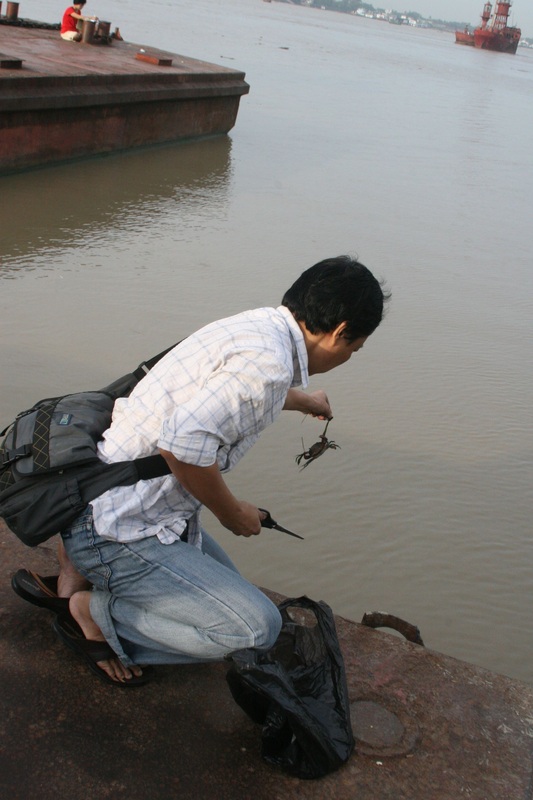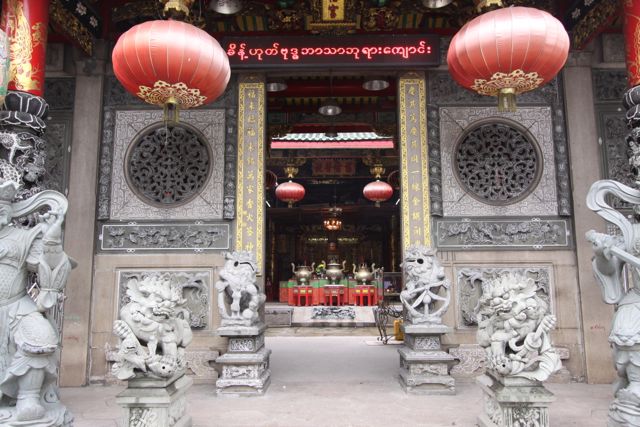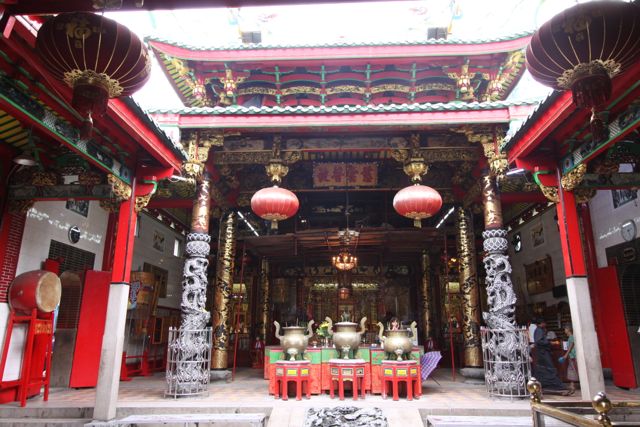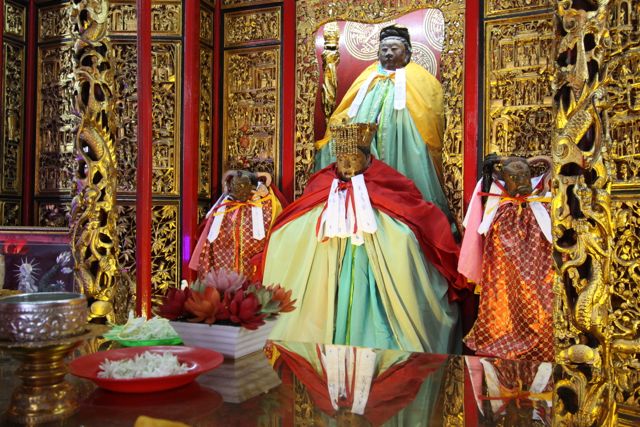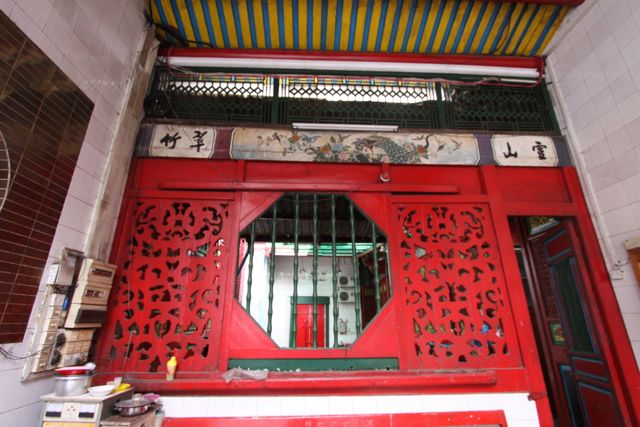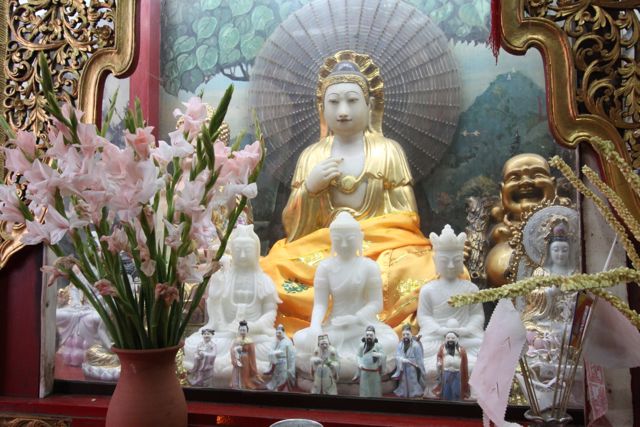SHWEDAGON PAGOTA. Everyone goes there, including Hillary and Barak. Indeed it was because of the Pagota that the fishing town of Dagon rose to fame. Although there are legends placing its start during the age of the Buddha, more likely it was in the 6th Century. And it had good times and bad. But in the 15th C. it rose to 131 feet. Earthquakes took it down a notch, but repairs in the 18th C. took it to 326'.
The cardinal points have entries, but the South (facing downtown) is the main. There is a pair of those guardian lions...
...and a particularly long stairway...
...and lots of interesting details (and ogres) as well as...
...vendors on both sides...
...hoping to sell a statue and...
...they have quite an inventory.
At the top, the walkway opens out onto the grand platform with the stupa in the middle. The base perimeter is 1,420', so three times around and one has gone 8/10's of a mile. And one passes 64 pagodas along the way, each with spire and image of the Buddha inside.
Of course there are Daily Animals...here a maintenance person and worshippers water the Tuesday Lion.
This 1843 four-ton bell is second largest in Myanmar; a tap on it will surely bring great merit.
At night the complex takes on a Disneyland effect...lots of lights...
...lots of colored blinking lights....
...and families performing rituals.
But the mood is quiet and respectful...with people sitting, praying, chatting, in small groups or...
...off to one side alone.
BOTATAUNG PAGODA has it origins in the mist of time, similars to Shwedegon's.
It was destroyed by an errant bomb in WWII, and in its rebuilding a relic chamber was discovered. In it were nesting pagodas containing many treasures...
....the most striking of which was a small capsule containing hair relics of the historic Buddha. Needless to say a pilgrimage to the Pagoda, and making an offering at the core where the capsule is displayed, is important for Buddhist adherents.
Outside people prayers at one's daily animal spots, or ....
...at one of the Buddha's in an ancillary building.
To gain merit, food for fish and turtles or ...
...pigeons is bought and served, or...
...near the Pagoda crabs from a local market are being freed from their bindings and released back into the river.
And now for something entirely different....a Chinese Buddhist temple. After all these Burmese temples, it was bit of a surprise to be transported back to China at Kheng Hock Keong, (1903) "Celebrating Prosperity Temple", in Chinatown. Founded by Chinese Shipping Companies, it is dedicated to Masu, a Sea Goddess. Pass through the street entry....
... to a courtyard, with the the main worship hall's entry beyond.
In the rear, in the center, is a statue of Mazu, with attendants in front.
Around the sides there are rooms with typical Chinese decorations...
...and, of course, somewhere, a statue to Guanying, often called the Goddess of Compassion.
